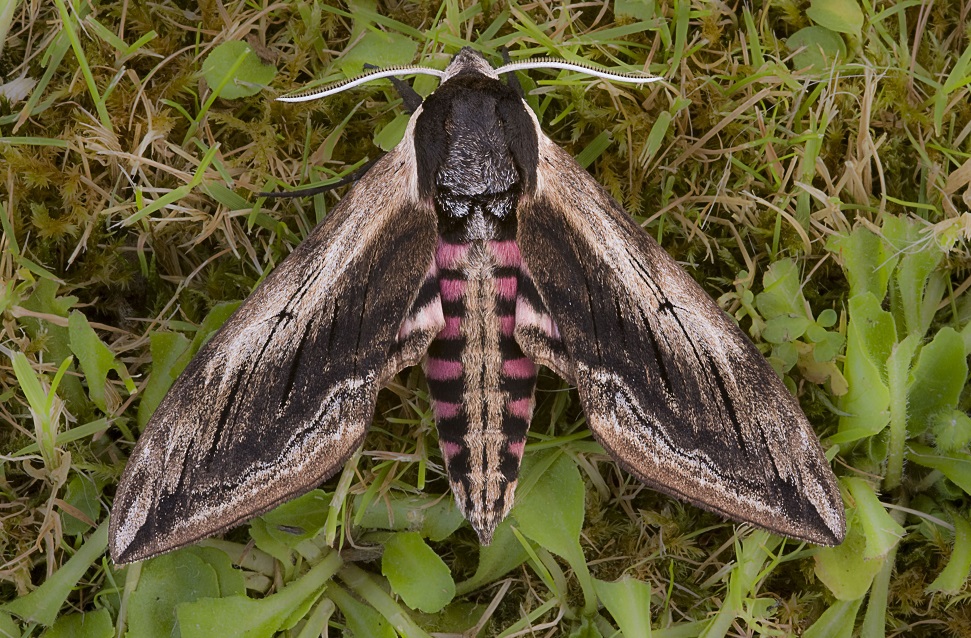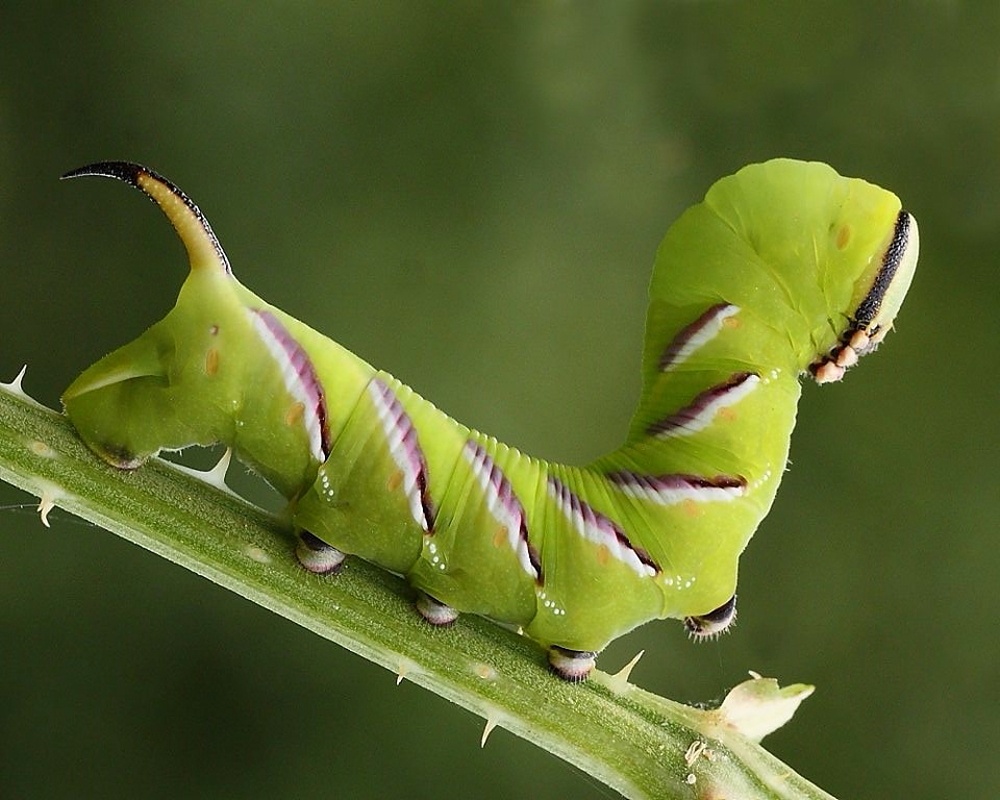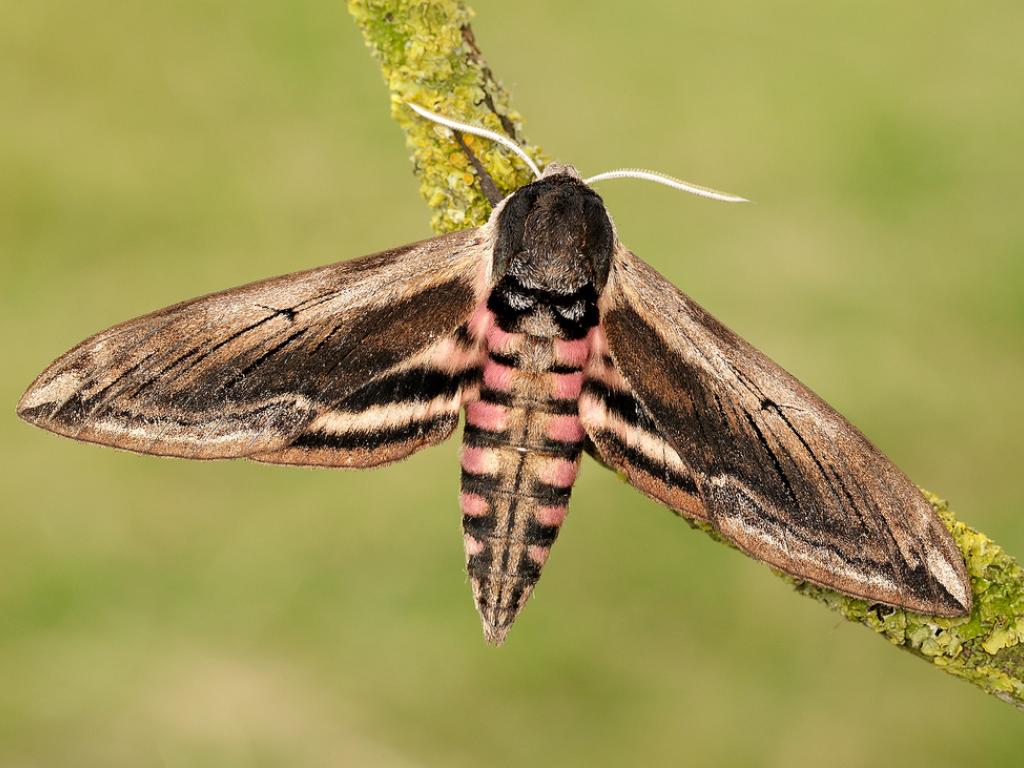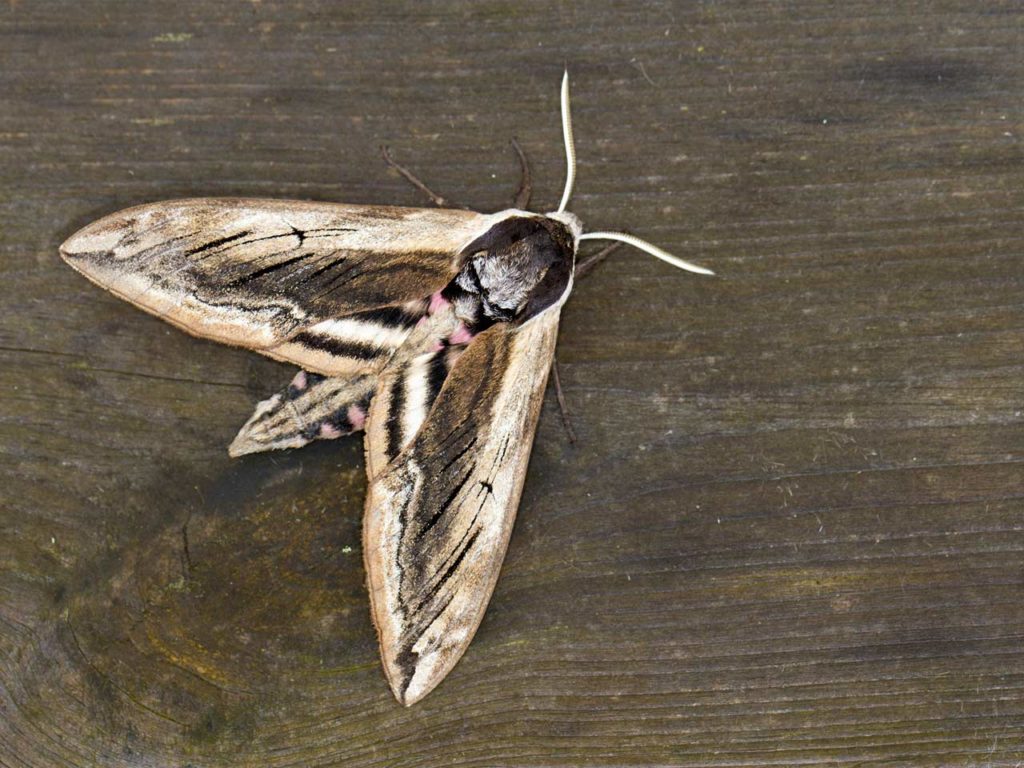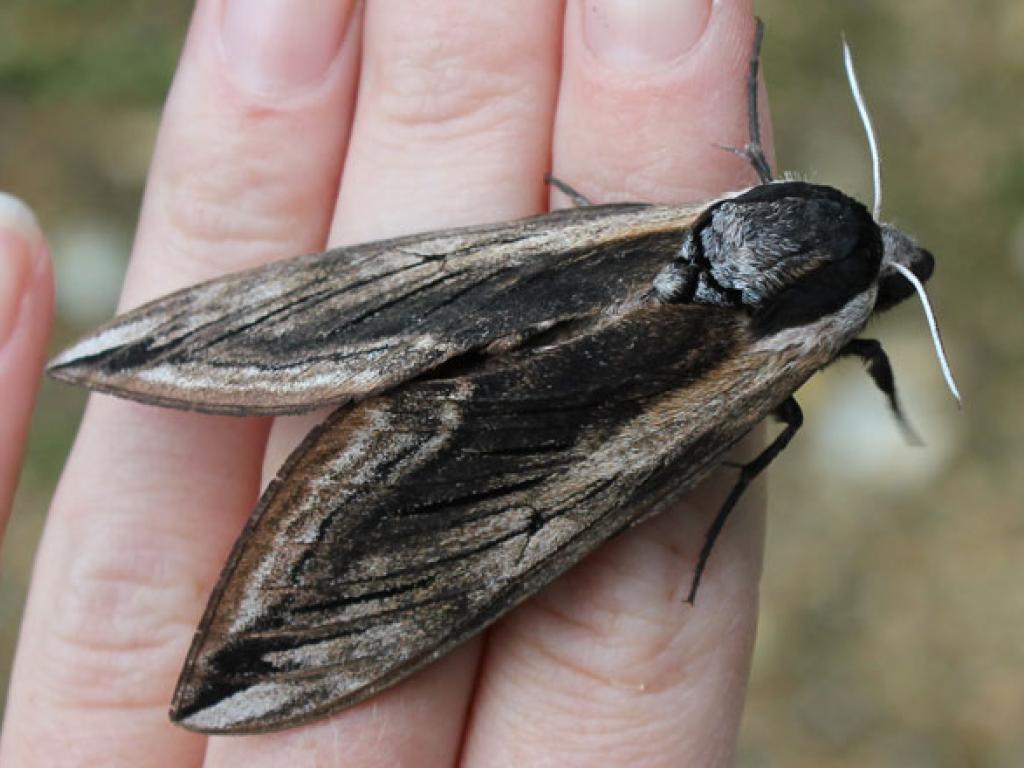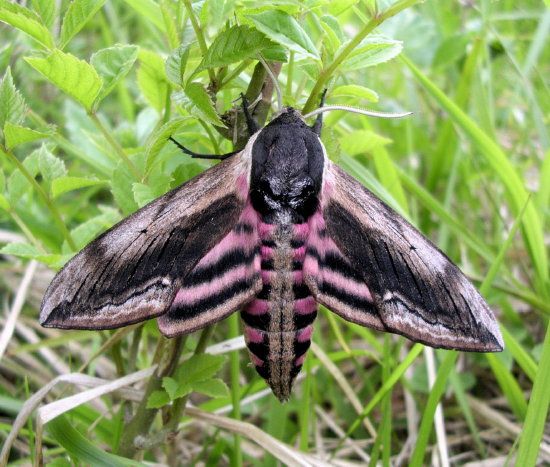Privet Hawk Moth (Sphinx ligustri)
Privet hawk moth of the hawk moth family has an extensive range, spreading across the Palearctic realm, covering Eurasia and North Africa. It is majorly found in Scotland, England, and Wales. The caterpillar of this moth species primarily feeds on privets alongside other plants, hence the name.
i.pinimg.com
Scientific Classification
- Family: Sphingidae
- Genus: Sphinx
- Scientific Name: Sphinx ligustri
Description and Identification
Caterpillar
They are large, having a vibrant green body, with purple and white stripes running diagonally to their sides. They have a yellowish-black slightly curved horn on their tail end. They mainly occur from July to August, turning pinkish when ready to pupate and bury underground.
Adult Moth
Sexual Dimorphism: Present but not prominent
The males produce a hissing sound when disturbed by rubbing together their spines and scales present near the end of their abdomen.
Color and Appearance
They have an elongated, torpedo-like body with pink and black stripes on their abdomen.
Forewings
When opened, they appear brownish with patches of the same color all over. When closed, the color remains the same, with the brownish patches partially visible.
Hindwings
When opened, the hindwings have a pinkish coloration. When closed, the pinkish color of the hindwings and the pattern on the abdomen become vague.
Average Wingspan: 9 – 12 cm
Flight Pattern: Consistent
Season: June – July
Quick Facts
| Distribution | England, Wales, Scotland |
| Habitat | Woodland, garden, fen, downland, hedgerow |
| Predators | Birds, bats |
| Lifespan of Adults | 10 – 30 days |
| Host Plants | Privet, poplar, honeysuckle, lilac, jasmine, ash tree, snowberry |
| Adult Diet | Nectar of highly scented flowers |
Scientific Classification
- Family: Sphingidae
- Genus: Sphinx
- Scientific Name: Sphinx ligustri

